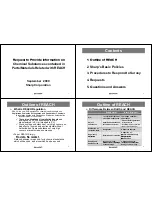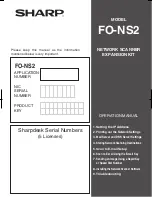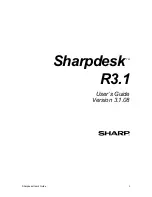
Errata
63
Release 10.3.1
The subscriber broadcasts a PPPoE Active Discovery Initiation (PADI) packet to
both the master and backup router. Only the master router processes the
packet and creates the subscriber session. When the master router fails, VRRP
switchover occurs and the backup router becomes the new master router.
PPPoE data that now shows up on the new master is dropped because a
session was not created for the subscriber on the new master. Eventually, the
PPP session on the client expires and the client session is re-created with the
new master.
The
ICR Overview
section in
JUNOSe 10.3.x Service Availability Configuration
Guide, Chapter 6, Managing Interchassis Redundancy
, does not accurately define
an ICR partition. The following sentence accurately defines the ICR partition:
An ICR partition is a set of S-VLANs (and CVLANs) associated with a unique
VRRP instance.
The note in the
ICR Overview
section in
JUNOSe 10.3.x Service Availability
Configuration Guide, Chapter 6, Managing Interchassis Redundancy
does not
accurately describe what service providers must do to enable subscriber traffic
to reach all interfaces. The following note accurately describes what to do:
The
ICR Scaling Considerations
section in
JUNOSe 10.3.x Service Availability
Configuration Guide, Chapter 6, Managing Interchassis Redundancy
incorrectly
states that ICR supports 1:3 or 1:N subscriber redundancy.
ICR supports 1:1 subscriber redundancy only.
The
Example: Configuring ICR Partitions That Group Subscribers by S-VLAN ID
section in
JUNOSe 10.3.x Service Availability Configuration Guide, Chapter 6,
Managing Interchassis Redundancy
incorrectly uses the
control-subinterface
keyword in Step 4 of the procedures that describe how a master and backup
ICR partition can be configured. The correct keyword is
control-interface
,
which controls traffic on the range of subinterfaces of the master and backup
partitions. The following example of the command used to control traffic on
subinterface ranges of the master and backup partitions is correct:
host1 (config-if)#
ip vrrp 1 icr-partition svlan-range 100 110 control-interface
In
JUNOSe Service Availability Configuration Guide, Chapter 4, Configuring a
Unified In-Service Software Upgrade
, the DHCP Relay Server row in the
Application Support for Unified In-Service Software Upgrades table is
incorrectly marked as unsupported for the unified ISSU operation. DHCP relay
has supported unified ISSU since JUNOSe Release 9.2.0.
NOTE:
While deploying ICR, service providers must ensure that the aggregation
layer between the E Series router and access node (DSLAM) provides a broadcast
domain per VLAN or per S-VLAN between active and backup routers. In the case
of a direct connect model the access node must provide the broadcast domain per
VLAN or per S-VLAN between the active and backup routers or instead provide an
Ethernet switch such as EX Series Ethernet Switch between the access node and E
Series router.
















































